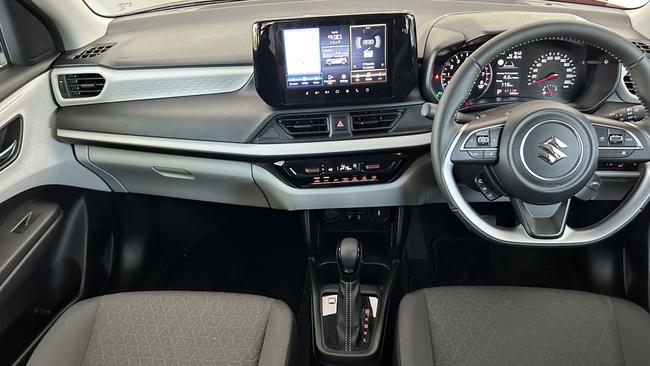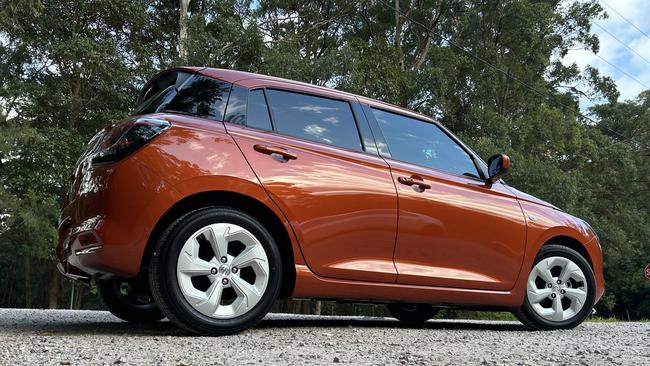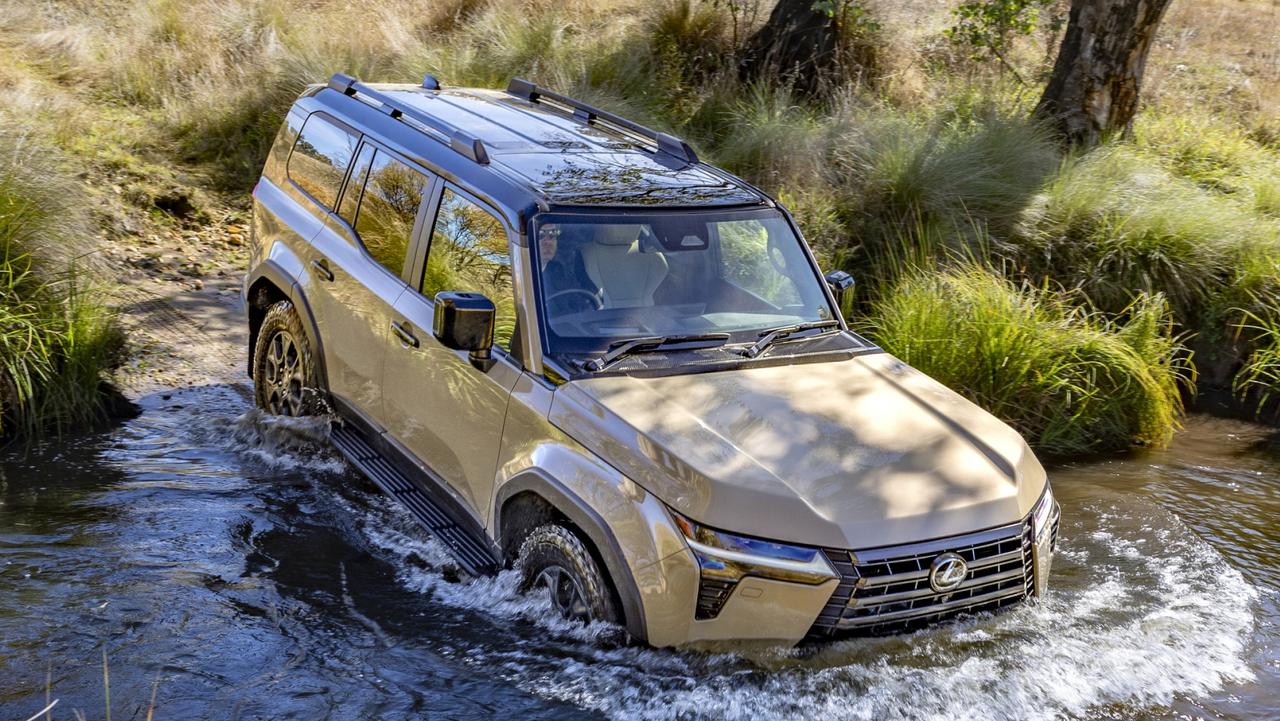Suzuki Swift Hybrid review finds hatch is cheap to run with the backing of a strong reputation
Suzuki’s most popular hatchback, the Swift, has been given a ‘mild’ engine makeover with miserly results.
Business
Don't miss out on the headlines from Business. Followed categories will be added to My News.
Household pressures show no sign of abating.
While the crazy prices surrounding cars through the pandemic have receded, there are plenty of buyers looking to reduce transport costs.
Hybrids are the flavour of the moment. Battery electric vehicle popularity has dipped as hybrids surge.
Those looking to save with a sub-$30,000 compact hatch could do worse than the new Suzuki Swift Hybrid.
On paper the performance numbers look underwhelming. But in the metal, the little five-door impressed our family with its cabin dimensions and oily rag running costs.
What do you get?
Sitting middle ground within the Swift Hybrid line-up, the ‘Plus’ is the best value among the trio when weighing up the features.
Base hybrid models are $26,490 drive-away for the manual, yet for the extra $3190 the Plus comes with an automatic transmission and a reasonable list of extras worthy of the investment. Manual options are great for those who love three pedals, but they are becoming harder to resell with many modern drivers having automatic-only licences.
Complimentary equipment in the Plus includes manual aircon, nine-inch central touchscreen with wireless Apple CarPlay and Android Auto, USB-C and USB-A ports and 16-inch alloys.
White is the only complimentary colour. Metallic paint options cost at least $690 extra, including silver, grey, red and orange. There is also a two-tone option where blue is combined with a black roof – that attracts an $1190 premium.
Safety equipment on this model has also been upgraded, so the autonomous braking will now step in if lateral collisions are detected, as well as bicycle riders and pedestrians.
Warranty coverage of five years and unlimited kilometres is par for the automotive course, matching the likes of Toyota, Hyundai and Mazda, but not as long as MG, Kia and Mitsubishi.
Capped price servicing should be less than $2000 for five return visits to the dealer. That’s expensive up against the Toyota Yaris Hybrid which is $1225, but it is similar to the MG3 Hybrid which also has shorter servicing intervals of 10,000km, as opposed to the 15,000km in the Swift.

How was the drive?
Unlike many hybrids, the Swift never runs purely on electric power.
At slow speeds some rivals, including Toyota, Nissan, Hyundai and Kia, will operate purely on battery power. The Swift engine is constantly working in what’s called a “mild hybrid”.
When stopped the system automatically shuts down the engine and then supplies the energy to restart and a small electric motor assists with acceleration. The engine supplies energy to the small battery, as does regeneration from deceleration and braking.
Everything is done without driver input and operationally it’s fuss-free … steep inclines can test the prowess but the Swift will maintain steady momentum and it’s only once pushed above 4000rpm does the three-pot engine start to get rowdy.
On the highway it boasts impressive manners for a small car with limited road noise.
Under the majority of circumstances it’s supremely efficient and a surprisingly agile drive. Changes in direction are beautifully controlled and it corners with precision – a small turning circle also means U-turns are like shelling peas and even the tightest of carparks feel spacious.
Tipping the scales at less than a tonne the Swift is a bantamweight by modern standards. We loaded four of the family on board for some trips which meant some extra right foot exercise was required on hilly terrain but the Swift surprisingly maintained its overall composure.
Two adults in the back is achievable with reasonable head and legroom. Boot real estate is limited with only 265 litres, which is similar to key rivals.
Our test returned average fuel consumption of 4.6L/100km, which was 0.6L above the claim from Suzuki while drinking premium unleaded.

Would you buy one?
Kel: Our test car was in lairy orange, which wouldn’t be my choice – I think the two-tone blue and black would be superb. The Swift had great heated seats, even though they were fabric and not leather, while I also really liked the drive. Surprisingly it coped with our family activities without an issue and even managed to fit in the grandparents for one trip to sport. The only issue for me would be the small boot, but as an overall package for less than $30k it’s great value.
Grant: Suzuki has built a solid reputation for longevity and reliability which puts it ahead of many rivals in this genre. Where it also excels is on-road confidence. Ultimately, a car which feels predictable and balanced is a safer offering and what the Swift lacks in straight line speed it makes up for with poise and precision. At this price and the cheap running costs, it’s a winner in the current market.




